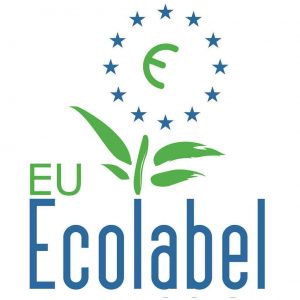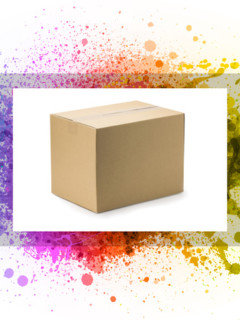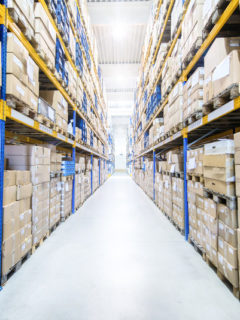Above all, you have seen labelling and signposting symbols on boxes, bags and tapes. On the one hand, some speak for themselves but there are others that are more difficult to decipher. In this post we explain everything so that packaging symbols have no more secrets for you.
Indexes to the symbols on the packaging:
1. environment and recycling
2. Raw materials
3. Quality labels and shipping
4. Transport of dangerous goods
Guide to symbols on packaging
Environment and recycling
Thanks to these symbols, identifying packaging is easier and will help you know how environmentally friendly it is, where it comes from and whether it is suitable for recycling.

This is certainly one of the most common symbols on packaging. In this way, the number indicates the percentage of recycled material in the product. Thus, this symbol was designed in the late 1970s by American Gary Anderson and is now used all over the world as a recycling symbol.

So if you want to know if you’re dealing with a fully recyclable product, look for this symbol. This is the case, for example, with our ecologically responsible packaging.

Just as an example, do you often see the RESY symbol? This symbol is granted by the RESY Organisation for the Regulation and Evaluation of Materials. Please note that the number under the arrows indicates the company number.

The Forest Stewardship Council or FSC is an organisation that ensures that the world’s forests are managed responsibly. Thus, paper and wood with this symbol means that they respect the FSC standards.
And more…
 The Ecolabel refers to a quality mark granted by the European Union to products that stand out for being better for the environment, without their quality beingcompromised. That is, due to very strict requirements, only 10-20% of products on the European market carry this label.
The Ecolabel refers to a quality mark granted by the European Union to products that stand out for being better for the environment, without their quality beingcompromised. That is, due to very strict requirements, only 10-20% of products on the European market carry this label.

This symbol refers to ISPM15, the International Standard for Phytosanitary Measures. Since this standard states that both the wood of the pallets and the wood of the packaging in general have been disinfected at high temperatures. This way, the spread of harmful organisms from one continent to another is avoided.

PEFC is a symbol granted by the Programme for the Endorsement of Forest Certification. Thus, its objective is to promote sustainable forestry, highlighting products from renewable materials, made from wood obtained from a sustainable forest.

This symbol identifies electric and electronic products that have the obligation to be separated in an appropriate recycling.

On our website, www.rajapack.pt, and in our catalogue you will find out if a product is environmentally friendly thanks to this symbol.
Raw materials
In short, pictograms help to identify the type of material in your packaging. The plastics industry has developed a system to identify plastic materials to facilitate sorting and recycling:

PET stands for polyethylene terephthalate. This raw material is mainly used in the manufacture of transparent plastic bottles, for example. The arrows around the symbol indicate that this raw material is recyclable. This also applies to the raw materials below in this list.

High density polyethylene is identified by this symbol. This rigid material is very strong and opaque (comparable to the glass bottles used for milk). It is mainly used to make rubbish bags, strong plastic bags and water drums that can be damaged.

The next raw material is vinyl chloride or PVC. It is therefore a stable, durable and lightweight plastic. As well as lasting a long time, it can be reused after the recycling process.

PE-LD stands for low density polyethylene. This material is transparent, very soft and resistant, and is manufactured from petroleum. As PE-HD is more robust, this material is easily recyclable. This plastic can withstand temperatures of up to + 80 °C.

PP stands for polypropylene. Polypropylene has a much higher strength than polyethylene and is therefore one of the most widely used plastics. Polypropylene hardly deforms as it is very strong. Resistant to corrosion, heat and chemicals.

Polystyrene or PS is a type of polystyrene with insulating properties. This plastic can be easily recycled due to its great robustness and can last for years.

Polyurethane or PUR is a type of rigid foam. It does not contain CFCs and is therefore also environmentally friendly. It is widely used in the construction sector and also in the world of expanded foam packaging.
Quality and shipping labels

CE stands for Conformité Européenne (European Conformity ) and is for products that conform to the applicable standards within the European Economic Area (European Union, Switzerland, Liechtenstein, Norway and Iceland).
 Products with this label must meet the strict requirements and tests set by the UN. You may see this unique UN symbol, among other things, on certain plastic bags, drums, etc.
Products with this label must meet the strict requirements and tests set by the UN. You may see this unique UN symbol, among other things, on certain plastic bags, drums, etc.

You will find this label on packaging with antistatic properties. This type of packaging retains little static electricity and is not very conductive. It is necessary when you have to send electrically sensitive electronic equipment.

This is one of the symbols used to indicate which way a box should be placed. It is usually accompanied by the phrase “This side up”. The variant with the black arrows is generally used for transporting liquids.

Have you seen this symbol? It means that the contents of the package are sensitive to moisture, so be careful with water.

This label emphasises the importance of boxes not being stacked or weighed on top. This type of label is very useful for the most delicate products.

To make it clear that your products are fragile or very fragile, you should use this label on the packaging. Under glass, it can often read “fragile”.

For example, when you see this label on a package, you will know that you are handling a fragile and delicate product, so handle it with care!
Transport of dangerous goods
The following set of symbols on packaging require extra attention. This is because they indicate that the packaging contains dangerous products. Therefore, when handling it, you are advised to wear protective gloves and work clothes. Here are the dangerous products you may be dealing with:

Flammable gases

Flammable liquids

Solid flammable substances

Corrosive substances

Various dangerous substances and objects

Environmentally Hazardous Substances

Hazardous substances in limited quantities (air transport)

Hazardous substances in limited quantities (road and rail transport)

Toxic substances
In conclusion: if you would like more information about labels and symbols on packaging, please do not hesitate to contact us!
Send an e-mail to: contacto@rajapack.pt
Tel.: 707 788 008















